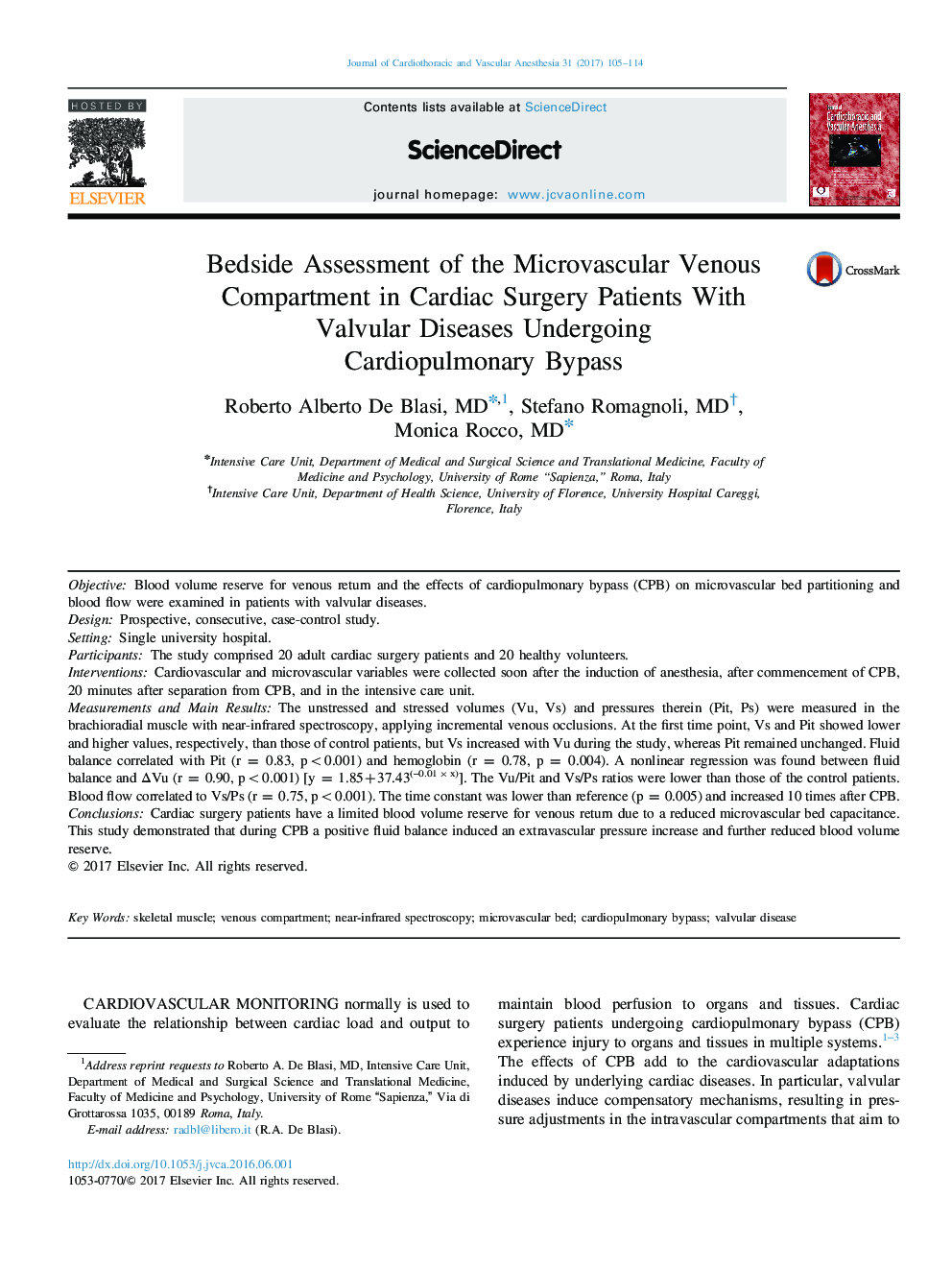| Article ID | Journal | Published Year | Pages | File Type |
|---|---|---|---|---|
| 5582342 | Journal of Cardiothoracic and Vascular Anesthesia | 2017 | 10 Pages |
ObjectiveBlood volume reserve for venous return and the effects of cardiopulmonary bypass (CPB) on microvascular bed partitioning and blood flow were examined in patients with valvular diseases.DesignProspective, consecutive, case-control study.SettingSingle university hospital.ParticipantsThe study comprised 20 adult cardiac surgery patients and 20 healthy volunteers.InterventionsCardiovascular and microvascular variables were collected soon after the induction of anesthesia, after commencement of CPB, 20 minutes after separation from CPB, and in the intensive care unit.Measurements and Main ResultsThe unstressed and stressed volumes (Vu, Vs) and pressures therein (Pit, Ps) were measured in the brachioradial muscle with near-infrared spectroscopy, applying incremental venous occlusions. At the first time point, Vs and Pit showed lower and higher values, respectively, than those of control patients, but Vs increased with Vu during the study, whereas Pit remained unchanged. Fluid balance correlated with Pit (r = 0.83, p<0.001) and hemoglobin (r = 0.78, p = 0.004). A nonlinear regression was found between fluid balance and ÎVu (r = 0.90, p<0.001) [y = 1.85+37.43(-0.01Ãx)]. The Vu/Pit and Vs/Ps ratios were lower than those of the control patients. Blood flow correlated to Vs/Ps (r = 0.75, p<0.001). The time constant was lower than reference (p = 0.005) and increased 10 times after CPB.ConclusionsCardiac surgery patients have a limited blood volume reserve for venous return due to a reduced microvascular bed capacitance. This study demonstrated that during CPB a positive fluid balance induced an extravascular pressure increase and further reduced blood volume reserve.
